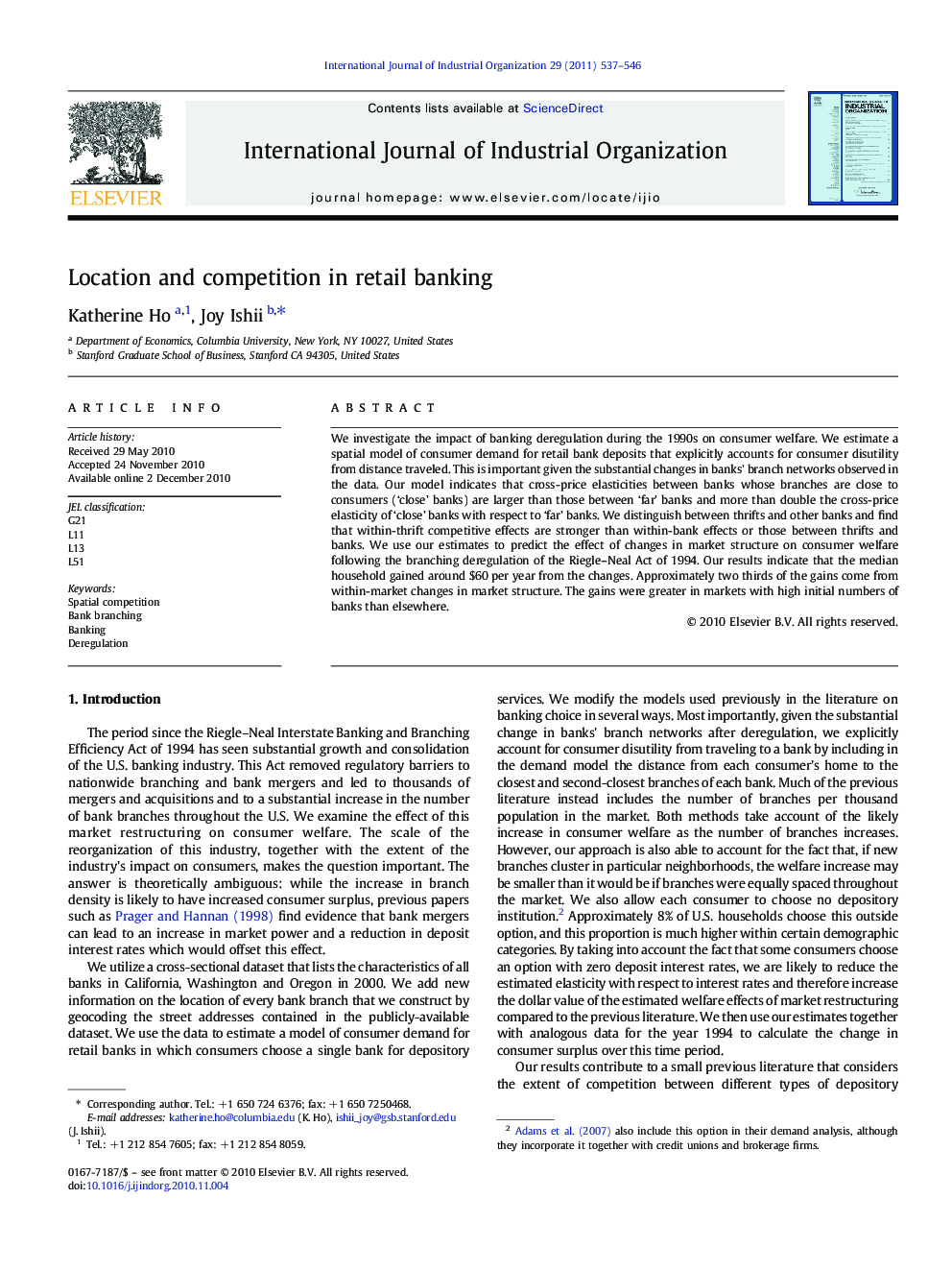| Article ID | Journal | Published Year | Pages | File Type |
|---|---|---|---|---|
| 5078267 | International Journal of Industrial Organization | 2011 | 10 Pages |
We investigate the impact of banking deregulation during the 1990s on consumer welfare. We estimate a spatial model of consumer demand for retail bank deposits that explicitly accounts for consumer disutility from distance traveled. This is important given the substantial changes in banks' branch networks observed in the data. Our model indicates that cross-price elasticities between banks whose branches are close to consumers ('close' banks) are larger than those between 'far' banks and more than double the cross-price elasticity of 'close' banks with respect to 'far' banks. We distinguish between thrifts and other banks and find that within-thrift competitive effects are stronger than within-bank effects or those between thrifts and banks. We use our estimates to predict the effect of changes in market structure on consumer welfare following the branching deregulation of the Riegle-Neal Act of 1994. Our results indicate that the median household gained around $60 per year from the changes. Approximately two thirds of the gains come from within-market changes in market structure. The gains were greater in markets with high initial numbers of banks than elsewhere.
Research Highlights⺠Branching deregulation in the 1990s led to a sizeable increase in consumer welfare. ⺠About two-thirds of the gains come from within-market changes in market structure. ⺠Spatial competition has an important impact on the retail banking industry. ⺠The strongest competitive effects are between pairs of banks close to the consumer. ⺠Within-thrift competitive effects are stronger than other bank type-based effects.
